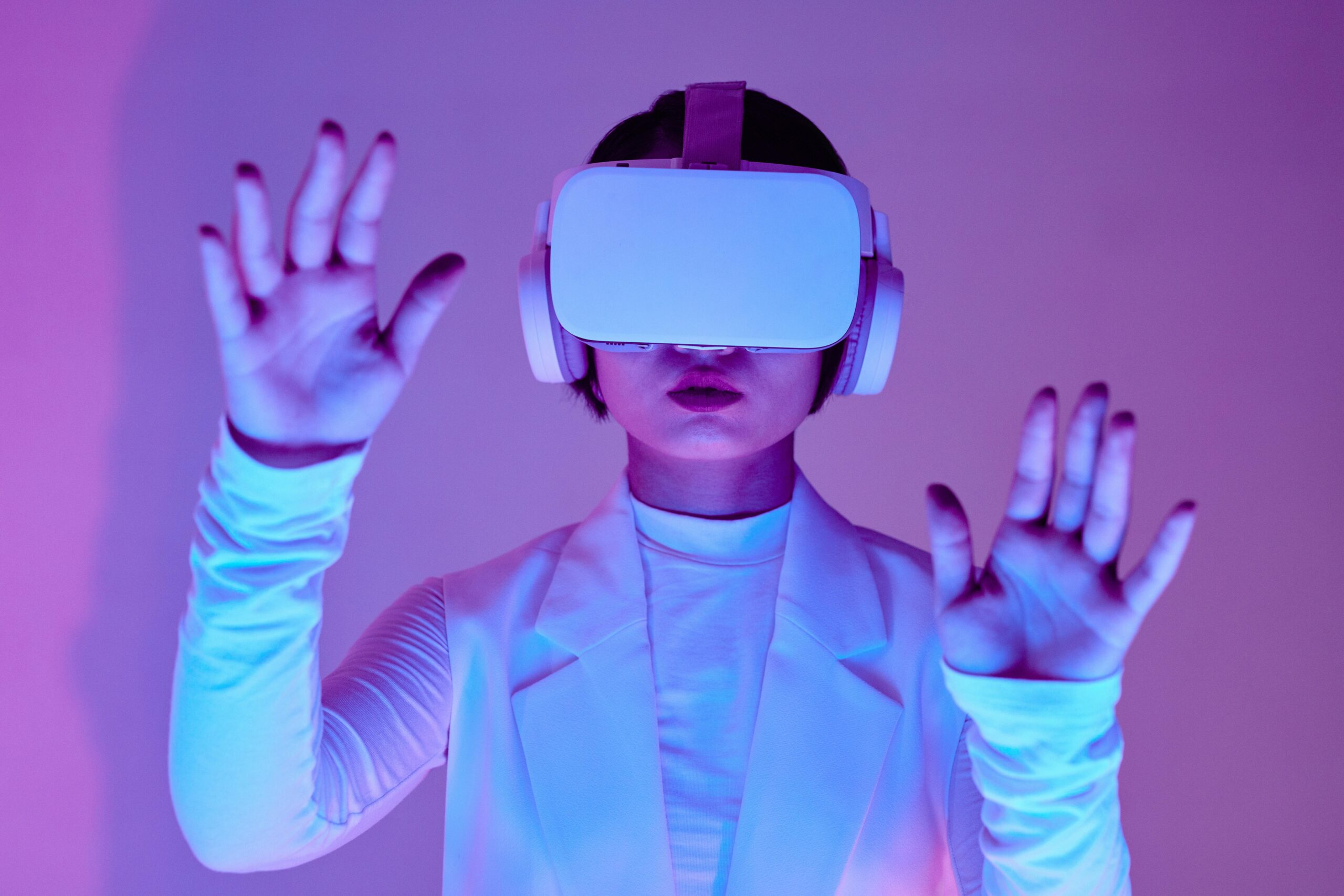Contents
- 1 Shaking Things Up: AI Uses Head Vibrations to Profile People
- 2 Intro
- 3 Understanding the Science Behind Head Vibrations
- 4 How AI Processes and Profiles Head Vibrations
- 5 The Accuracy and Limitations of Vibration-Based Profiling
- 6 Ethical Considerations and Privacy Concerns
- 7 Real-World Applications of AI-Driven Vibration Profiling
- 8 The Future of Vibration Profiling and AI
Shaking Things Up: AI Uses Head Vibrations to Profile People
Intro
Advancements in artificial intelligence (AI) have brought about a new era of understanding and analyzing human behavior. From facial recognition to voice recognition, AI has proven to be a powerful tool in identifying and categorizing individuals. But what if we told you that AI can now profile people from their head vibrations? Yes, you read that right. Scientists and researchers have discovered that the unique vibrations emitted by our heads can be used to create an accurate profile of a person. This breakthrough technology is set to revolutionize the way we understand and interact with each other, and it’s all thanks to the power of ai profile people from thier head vibrations. In this blog post, we will delve deeper into how AI is using head vibrations to profile people and the potential impact it could have on our society.
Understanding the Science Behind Head Vibrations
At the core of this innovative profiling method is the scientific principle that every human head emits a unique pattern of vibrations, similar to a fingerprint. These vibrations, although imperceptible to the human ear, can carry a wealth of information about a person. The structure of one’s skull, the density of bone, and even the manner in which muscles and skin respond to various stimuli contribute to these distinctive vibratory signatures. Researchers have harnessed sophisticated sensors and AI algorithms to capture and analyze these vibrations, unlocking new potentials in identifying individuals. One intriguing aspect of this technology is its potential to interpret emotional states. The question arises: can AI detect human emotion from head vibrations? Preliminary research suggests that variations in emotional states can indeed alter the vibratory patterns emitted by the head. For instance, stress or excitement might subtly change the frequency or amplitude of these vibrations, offering a non-invasive window into a person’s emotional well-being. This capability could transform how we understand and interact with AI, making it more empathetic and responsive to human feelings. By tapping into the unique vibrations our heads produce, AI is poised to offer not just identification but insight into the nuanced spectrum of human emotions.
How AI Processes and Profiles Head Vibrations
The processing and profiling of head vibrations by AI involve a complex interplay of cutting-edge technology and sophisticated algorithms. Initially, specialized sensors meticulously capture the minute vibrations emanating from an individual’s head. These sensors are highly sensitive, designed to detect the subtle nuances that differentiate one person’s vibratory pattern from another’s. Once these vibrations are captured, the data is fed into advanced AI systems equipped with machine learning capabilities. Here, the magic happens: the AI begins to analyze the data, comparing it against vast databases of known vibratory patterns. Through a process called pattern recognition, the AI identifies unique markers within the vibration data that correspond to specific characteristics or traits of the individual. This could range from physical attributes and health conditions to potentially emotional states, as hinted at by previous research. The AI continually refines its understanding with each new piece of data, improving its accuracy and the depth of the profile it creates. Unlike traditional biometric systems, this method does not require direct contact or visibility, making it both unobtrusive and uniquely versatile in applications where conventional methods might not be feasible.
The Accuracy and Limitations of Vibration-Based Profiling
The accuracy of vibration-based profiling by AI is remarkably high, often compared to other biometric systems like fingerprints or iris recognition. However, it is not without its limitations. The technology requires the environment to be relatively quiet to accurately capture the head vibrations, as ambient noise can interfere with the sensors’ ability to detect the subtle nuances in the vibratory patterns. Additionally, the accuracy can vary depending on the emotional state or physical condition of the individual at the time of measurement, introducing variables that can challenge the consistency of the profiles created. Further, while the AI’s pattern recognition capabilities are advanced, there is still a learning curve as it adapts to recognize an ever-wider array of vibratory signatures. This means that, at least in the early stages, there may be a higher rate of misidentification or incomplete profiles. Despite these challenges, the technology presents a promising new frontier in personal identification and emotional analysis, with ongoing improvements expected to mitigate many of these initial limitations.
Ethical Considerations and Privacy Concerns
The introduction of AI that can profile people from their head vibrations ushers in not just technological innovation but also significant ethical considerations and privacy concerns. The question of whether AI has the power to define its own goals becomes critical as we entrust it with sensitive personal data derived from something as intimate and unique as head vibrations There is a thin line between harnessing AI for societal benefits and the potential for misuse or invasive surveillance. Concerns arise over who has access to this data, how it is stored, and the purposes for which it is used. Without strict governance, the potential for abuse is high, including the risk of unauthorized profiling or the creation of databases without individuals’ consent. The privacy implications are vast, prompting a need for robust ethical frameworks and clear consent mechanisms to ensure that people are aware of and agree to how their vibratory signatures are utilized. Safeguarding personal privacy in the age of AI-driven vibration profiling necessitates a careful balance between innovation and individual rights, urging a transparent dialogue between technology developers, regulators, and the public.
Real-World Applications of AI-Driven Vibration Profiling
The real-world applications of AI-driven vibration profiling are both diverse and transformative, offering innovative solutions across numerous industries. In the realm of security, this technology could revolutionize access control systems, providing a non-invasive yet highly secure method of identity verification without the need for physical or visual biometrics. Healthcare is another sector that stands to benefit significantly, as AI profiling through head vibrations could facilitate the early diagnosis of conditions that alter bone density or muscle response, leading to timely intervention and treatment. Additionally, the entertainment and marketing industries could use these profiles to enhance user experience, creating immersive environments that respond to an individual’s emotional state in real-time. However, amidst these promising applications, concerns emerge regarding the extent of AI’s influence on our lives. The question of “will AI take control of the world” surfaces, underlining the necessity for ethical considerations and the establishment of boundaries to ensure AI serves humanity without overstepping. The potential of AI-driven vibration profiling is vast, yet it underscores the need for a balanced approach to technology adoption, where innovation is matched with responsibility.
The Future of Vibration Profiling and AI
As we look toward the horizon, the future of vibration profiling and artificial intelligence (AI) promises to be a paradigm-shifting force in numerous fields. What makes AI so powerful is its unparalleled ability to process and analyze vast datasets quickly and accurately, learning and adapting as it goes. This intrinsic capability of AI will drive the evolution of vibration profiling, enabling even more nuanced and detailed understanding of individuals. We can anticipate advancements in sensor technology and AI algorithms that will overcome current limitations, such as ambient noise interference and the need for quiet environments for accurate profiling. Furthermore, as AI becomes more integrated into our daily lives, the potential for real-time monitoring and analysis of head vibrations could offer immediate insights into health, security, and even emotional well-being. This trajectory suggests a future where AI-driven vibration profiling becomes a seamless part of personal identification and interaction, offering unprecedented levels of personalization and convenience. However, the journey ahead also underscores the importance of addressing ethical challenges and privacy concerns proactively, ensuring that the future of vibration profiling and AI remains aligned with the principles of human dignity and individual rights.


